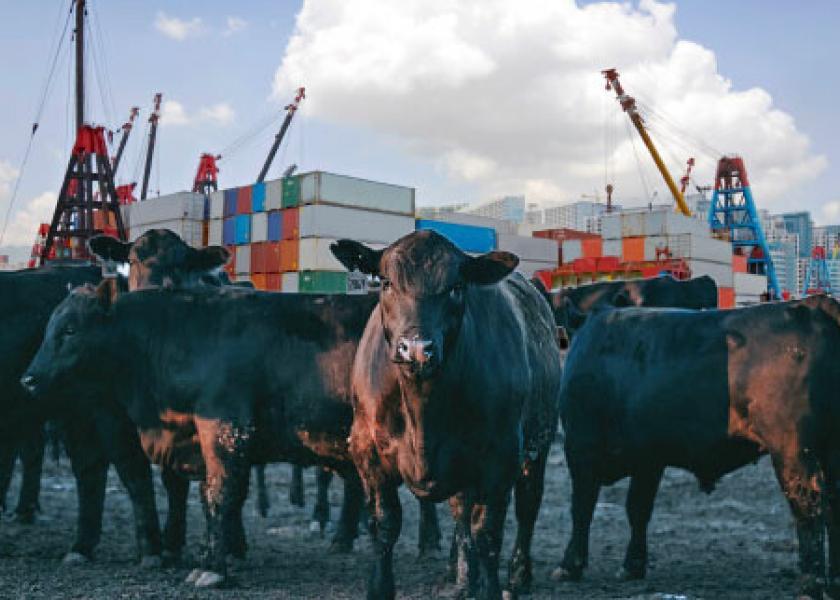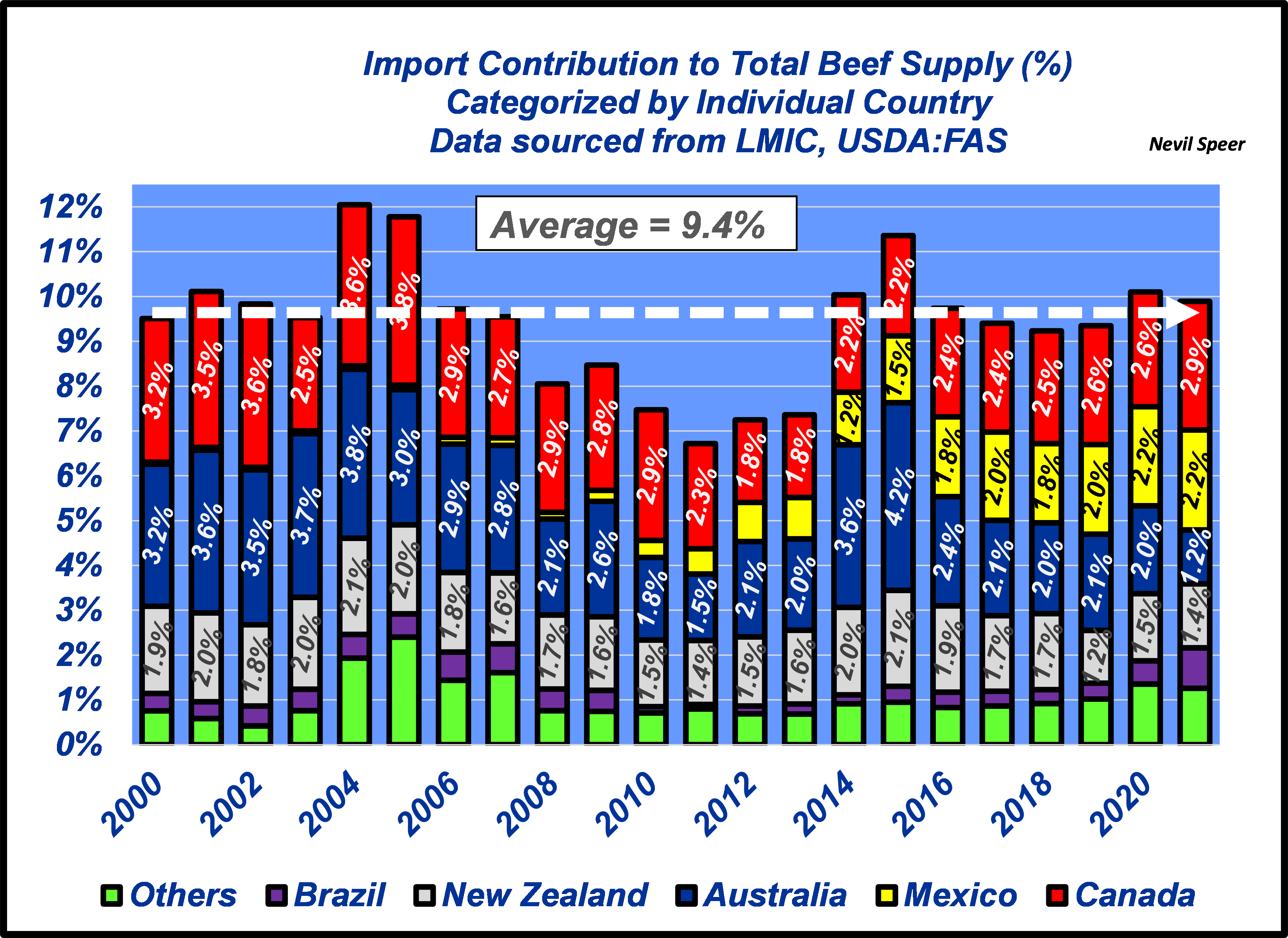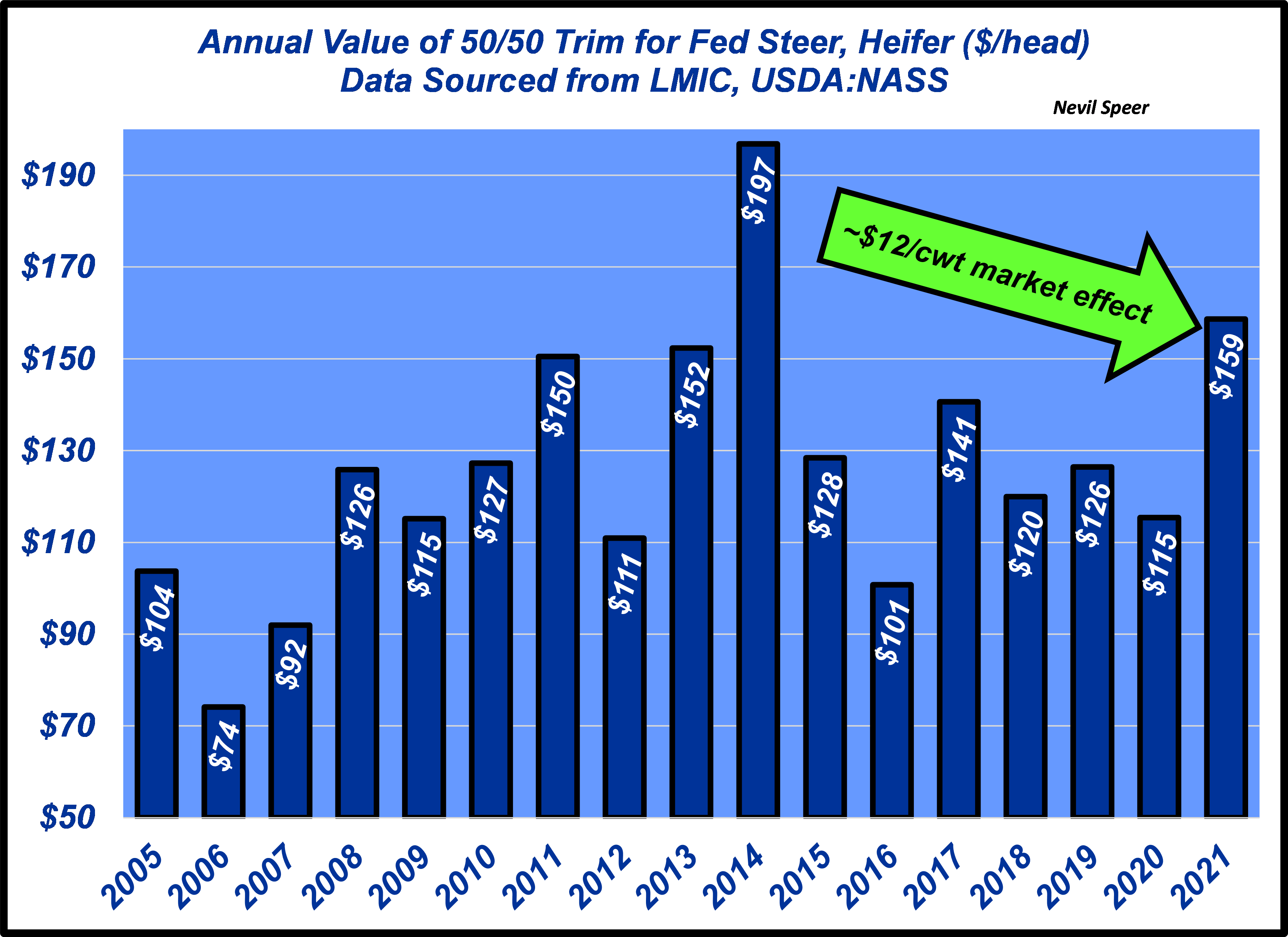Speer: It Really IS True: Imports Create Value

For some people, any mention of trade stokes emotion. So, pandering to that sentiment is an easy play. For example, one YouTube video recently mentioned that, “[Nevil Speer] says imports are actually good. Imports are creating value. Forget everything you know about supply and demand. And the increased supply of beef in this country created by imports is good for cattleman.”
Let’s unwind some of that. First, note the mention of an “increased supply of beef…created by imports.” FALSE! In fact, during the past five years, imports have comprised roughly 9.6% of total beef supply – right in line with the longer-run average. (see graph)

However, despite the pain of the concept, the reference to imports creating value is TRUE! I detailed the concept as it relates to the ground beef sector in a column entitled, Beef Imports Create Value for Both Consumers AND Producers.
Keep in mind, beef supply is an aggregate of supply across an array of different products. As it relates here, the industry creates a supply of product (fed beef 50/50 trim) that possesses little stand-alone demand. It’s essentially worthless without availability of lean trimmings to be blended into ground beef.
Last year’s production of 50/50 trim totaled nearly 3.8B lb with an average value of ~$95/cwt (equal to roughly $3.6B – or nearly $160/head for every fed steer/heifer marketed in the United States. Eliminating beef imports represents roughly half of total lean trim supply in the marketplace. (see graph)

If that occurred, 50/50 trim would subsequently generate only $80/head; translated back upstream represents a $10-$15/cwt hit for every feeder calf leaving the farm/ranch.
But don’t just take my word for it. Drs. Tonsor (Kansas State University) and Peel (Oklahoma State University) recently published an extensive review of trade dynamics in the U.S. beef industry. The authors highlight the fact that international trade doesn’t differ from any other market activity (buying and selling). It’s simply an attempt to facilitate value and more efficiently allocate resources. Several other key observations from the research pertain to this discussion:
- Exports and imports are, to a large extent, conducted by different firms for different reasons precisely because they are mostly different sets of products. Beef exports and imports combine to provide opportunities to increase value to the U.S. industry by exporting products that have more value in foreign markets and importing products that can be sourced more economically in international markets.
- The main driver of beef imports is the ground beef market resulting from the tremendous hamburger demand in the U.S.
- The quantity of beef imported beef used for ground beef is nearly equal to the amount of cow beef used (1.93B pounds versus 2.25B pounds). Without the imported beef there simply would not be enough lean beef to utilize all the fed trimmings produced in the U.S. for ground beef. This would lead one of several outcomes. One possibility is to simply reduce the amount of ground beef produced, with excess fed trimmings rendered in the allow market at much lower values.
- In total, beef imports allow the U.S. beef industry to expand total beef production and add value by utilizing fed trim most efficiently.
I concluded the import column by noting, “…beef imports don’t introduce competition – they establish complementarity. And the ensuing value creation benefits both consumers AND producers.” Seemingly, that’s a challenging concept for those who just want to be mad about trade – the resistance best described by economist John Maynard Keynes: “The difficulty lies not so much in developing new ideas as escaping from the old ones.”
Nevil Speer is an independent consultant based in Bowling Green, KY. The views and opinions expressed herein do not reflect, nor are associated with in any manner, any client or business relationship. He can be reached at nevil.speer@turkeytrack.biz.







